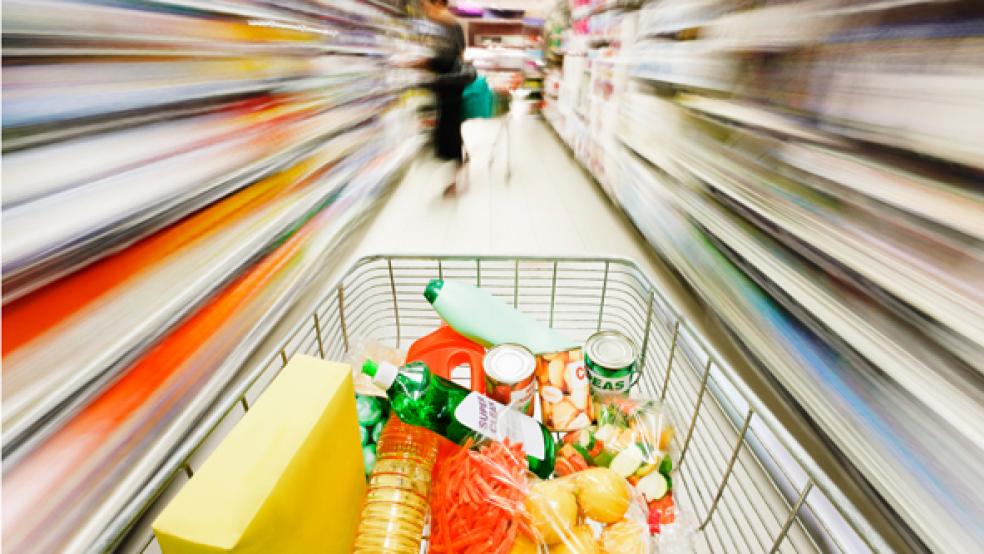Online shopping has encroached on bricks-and-mortar stores in nearly every aspect. But for one type of retailer, the physical store has so far emerged relatively unscathed.
Although major companies such as Amazon and Wal-Mart are experimenting with online grocery ordering and delivery, a new study from PwC found that only 1 percent of consumers said online shopping is their primary way to purchase groceries. That's despite the fact that the vast majority of the 1,000-plus respondents have access to the option. The findings make the segment an outlier in a web-centric consumer base, which is expected to drive online retail sales to $294 billion in 2014 and account for 9 percent of all U.S. sales, according to Forrester Research.
Related: Learn These Pricing Techniques - and Never Overpay Again
"Although online retail shopping is on the rise, it's not yet the go-to for grocery shoppers, now or in the near future," PwC said in the report, released Tuesday. "There's still a major obstacle to overcome: Touching the product isn't possible online."
While this drawback to web shopping extends beyond grocery, it's been particularly troublesome for a category in which consumers like to closely examine items such as fresh produce. According to Forrester, grocery accounts for only a minuscule 2.2 percent of online sales.
But consumers' preference for traditional grocery experiences isn't limited to online. According to PwC's report, 83 percent of shoppers prefer to buy groceries at traditional grocery stores.
That's despite increasing pressure from Wal-Mart, which announced earlier this year that it's expanding its organic food offerings, and is testing grocery delivery in San Jose, California, and Denver, Colorado.
Related: The Big Fat Lie We've Been Fed About Our Diet
The Denver market also allows shoppers to order their groceries online and pick up their orders in-store, without leaving their vehicles. Although Wal-Mart doesn't break out the sales for this program, spokesman Ravi Jariwala said more than 80 percent of shoppers in Denver who have used the service are repeat customers.
"More and more customers are beginning to choose pickup," Jariwala said. "We're trying to provide customers more choice."
Target is also putting pressure on the sector, saying in its most recent earnings call that it too will make certain non-perishable groceries available for in-store pickup. Wal-Mart's grocery segment made up 56 percent of its domestic sales last year, while food and pet supplies accounted for 21 percent of Target's U.S. sales.
Despite a slew of new competitors and costs associated with food inflation, a recent report from IBISWorld found that grocery store sales are expected to rise about 1 percent to $574.1 billion in 2014. Part of the segment's anticipated growth can be attributed to a rebounding consumer, who is more willing to spend more on pricier foods than during the recession, and an influx of shoppers who live in urban areas and prefer smaller, more frequent trips, IBISWorld said. The latter makes them more likely to skip out on wholesale clubs and supercenters.
Related: The 13 Worst Supermarkets in America in 2014
Still, that's not to say shoppers are completely satisfied with their grocery store visits. PwC's report found customers' top complaints include long lines, crowded stores and unhelpful workers. They also want more from their grocer's coupons and rewards programs, including custom coupons catered to their previous purchases and rewards for purchasing healthy foods.
And while they haven't yet taken to online ordering, consumers still want there to be a high-tech component to their grocery visits. These include in-store kiosks or robust mobile apps, which could include recipes or nutritional facts. FreshDirect, for example, which delivers groceries in the New York City and Philadelphia areas, allows customers to create shopping lists to expedite the online shopping process.
"While online channels may not become a common way to buy groceries in the near future, technology will still play a major role in the evolving grocery experience," said Sabina Saksena, managing director in PwC's U.S. retail and consumer practice. "Grocers that innovate and build on their digital channels to meet this demand will be most successful."
This article originally appeared in CNBC.
Read more at CNBC:
Wal-Mart's biggest problem: Its customers
Family Dollar adopts poison pill
Wal-Mart CEO: Big box stores will probably change




